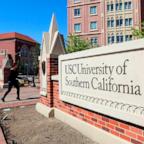Search for Anthrax Additive Requires More Tests
W A S H I N G T O N, Nov. 1 -- A group of military scientists is feverishly examining the microscopic spores of anthrax sent to Sen. Tom Daschle for clues to a mystery that could have profound implications for the United States and its ongoing war on terror: Who made it?
Contained in the deadly sample that arrived in Daschle's office on Oct. 15 are additives used to make the normally inert bacteria a better killer, and exactly which additives they are could point investigators in the direction of the anthrax's source, and from there, perhaps, to who sent it.
Biological weapons experts say producing potent samples like the spores in the Daschle letter require advanced techniques that leave tell-tale markers to who made it — the known manufacturers of biological agents all have different ingredients and methods for creating their wares.
ABCNEWS reported last week that initial tests on the Daschle letter discovered the presence of one of those important additives, bentonite, an anti-clumping agent that makes the spores float through the air and into the lungs more easily, and which United Nations weapons inspectors have associated with Iraq.
This issue is critical. Making anthrax deadlier by mixing it with such additives is a trademark of sophisticated, well-funded, government programs, which could point to state-sponsorship of the mail attacks. Finding bentonite or silica, a similar additive, is one of the few solid leads investigators would have on the possible source of the contaminated letters that have been showing up in mailrooms from Florida to New York City.
But there is dispute over what the additives are. The White House and the head of the Army's biological laboratories in Ft. Detrick, Md., have denied bentonite was present, and said even if it was, it would not necessarily point to Iraq as the culprit.
They said investigators have not ruled out domestic or foreign sources, and, experts in the field note, the equipment used to treat anthrax with bentonite is available on the open market, which could lead investigators to a suspect in the United States.
But mineralogists suggest the matter of the bentonite may not be closed
Checking Ingredients
The government's top labs have run the Daschle anthrax sample through a series of tests. An electron microscope study found the Daschle spores looked "virtually identical" to those found in Iraq by U.N. weapons inspectors in 1994. But after subjecting it to a sophisticated X-ray test last week, the Army concluded it contained no bentonite, a clay comprised of several minerals, including aluminum.




